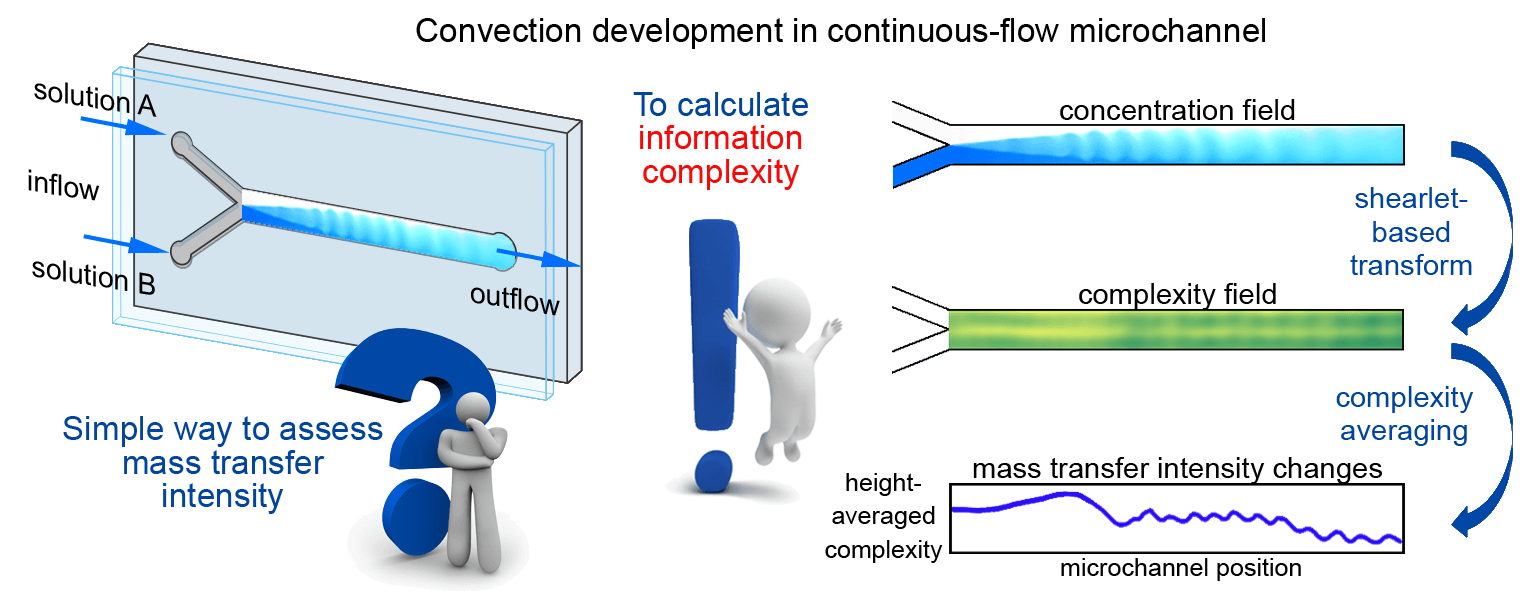 Open Access
Open Access
ARTICLE
Applying the Shearlet-Based Complexity Measure for Analyzing Mass Transfer in Continuous-Flow Microchannels
1 Institute of Continuous Media Mechanics UB RAS, Perm, 614013, Russia
2 Department of Applied Physics, Perm National Research Polytechnic University, Perm, 614990, Russia
* Corresponding Author: Elena Mosheva. Email:
(This article belongs to the Special Issue: Advanced Problems in Fluid Mechanics)
Fluid Dynamics & Materials Processing 2024, 20(8), 1743-1758. https://doi.org/10.32604/fdmp.2024.049146
Received 28 December 2023; Accepted 27 February 2024; Issue published 06 August 2024
Abstract
Continuous-flow microchannels are widely employed for synthesizing various materials, including nanoparticles, polymers, and metal-organic frameworks (MOFs), to name a few. Microsystem technology allows precise control over reaction parameters, resulting in purer, more uniform, and structurally stable products due to more effective mass transfer manipulation. However, continuous-flow synthesis processes may be accompanied by the emergence of spatial convective structures initiating convective flows. On the one hand, convection can accelerate reactions by intensifying mass transfer. On the other hand, it may lead to non-uniformity in the final product or defects, especially in MOF microcrystal synthesis. The ability to distinguish regions of convective and diffusive mass transfer may be the key to performing higher-quality reactions and obtaining purer products. In this study, we investigate, for the first time, the possibility of using the information complexity measure as a criterion for assessing the intensity of mass transfer in microchannels, considering both spatial and temporal non-uniformities of liquid’s distributions resulting from convection formation. We calculate the complexity using shearlet transform based on a local approach. In contrast to existing methods for calculating complexity, the shearlet transform based approach provides a more detailed representation of local heterogeneities. Our analysis involves experimental images illustrating the mixing process of two non-reactive liquids in a Y-type continuous-flow microchannel under conditions of double-diffusive convection formation. The obtained complexity fields characterize the mixing process and structure formation, revealing variations in mass transfer intensity along the microchannel. We compare the results with cases of liquid mixing via a pure diffusive mechanism. Upon analysis, it was revealed that the complexity measure exhibits sensitivity to variations in the type of mass transfer, establishing its feasibility as an indirect criterion for assessing mass transfer intensity. The method presented can extend beyond flow analysis, finding application in the controlling of microstructures of various materials (porosity, for instance) or surface defects in metals, optical systems and other materials that hold significant relevance in materials science and engineering.Graphic Abstract

Keywords
Cite This Article
 Copyright © 2024 The Author(s). Published by Tech Science Press.
Copyright © 2024 The Author(s). Published by Tech Science Press.This work is licensed under a Creative Commons Attribution 4.0 International License , which permits unrestricted use, distribution, and reproduction in any medium, provided the original work is properly cited.


 Submit a Paper
Submit a Paper Propose a Special lssue
Propose a Special lssue View Full Text
View Full Text Download PDF
Download PDF Downloads
Downloads
 Citation Tools
Citation Tools